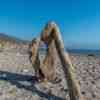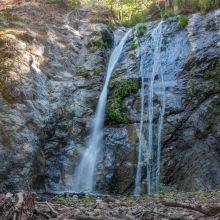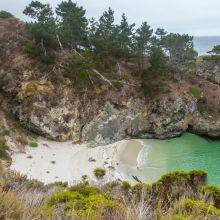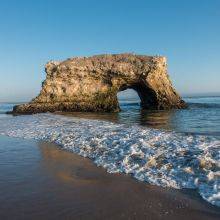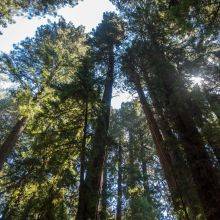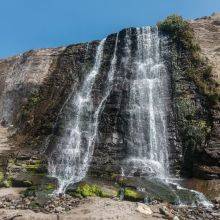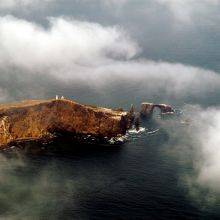When Is the Best Time
The State Park is popular for the 2 miles long beach but not crowded due to a one-mile walk to get there. The gate is open from sunrise until half an hour after sunset.
The entire 2 miles beach is only accessible at low tide. Watch the tide and don’t get trapped between rocky outcrops.
The summer is the foggiest season. Clearer skies and the best time for a visit are September and October followed by April and May.
It’s a moderate cool coastal climate with moist air. The average temperature is between 50 to 65°F year-round. Most of the precipitation occurs from October to April with up to 50 inches / 1270 mm. Fog happens between May and October usually from evening until late morning. If it’s hot in the backcountry, the fog might stay until the afternoon.
The grey whales migrate from Alaska to Baja California and can be spotted during mid-December and February. And again on their northward migration with their newborn calves from February to May.
Best Months to Visit
Location and Tips

The beach is absolutely stunning, full of driftwood and a huge playground for kids. Most of the visitors are close to the entrance. As soon as you walk for 10 minutes, you have the beach almost for yourselves. Swimming is not safe. You can even get washed off by huge waves or injured by masses of pebbles when getting to close to the sea.
The hikes lead along the Big Sur River, redwoods and oak forests, meadows and headlands.
The park offers different loop hikes in length and difficulty. Several trails lead along the river where birds can be spotted in the morning and evening. The longest loop trail is the Ridge Bluff 8 miles / almost 13 km long.
Tip: Check for ticks after hiking.
Other activities are biking and horse riding.
Only for people who are willing to leave the car at the parking entrance. The campground is up to ½ mile remote located. The 24 campsites are close to the Big Sur River. This campground is great for wildlife lovers. It is often visited by bobcats, foxes, deer, and raccoons. Water and flush toilets are available. It’s a first come first serve campground.
- While hiking bobcats can be spotted in open meadows.
- Mountain lions are rare to see.
- Ground squirrels are common and often seen.
- Unfortunately, wild pigs were introduced to the park for hunters in the early 1900s.
- Four different species of snakes live in the undergrowth.
- The park was designated as an important bird area in 1999.
- You may spot seals, sea lions, sea otters and migrating grey whales while walking along the beach.
Poison oak is found throughout the park often a ground cover or bush. The oily substance on the leaves, stems, and roots is irritating to the skin which gets itchy for days. I got in contact with them, and a cortisone cream was helpful.













